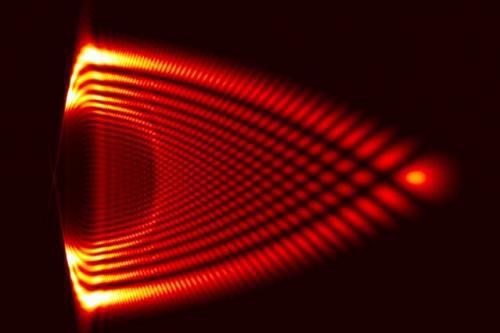Theoretical calculations predict the effect of self-acceleration of elementary particles

Spatial distribution of an accelerating wave packet of an electron. The brighter the area, the stronger the charge.
Theoretical calculations of physicists have revealed the possibility of giving elementary particles the property of self-acceleration when they increase the speed of motion without the participation of an electromagnetic field. Such an unexpected study was conducted jointly by scientists from MIT and the Israeli Institute of Technion.
However, do not rush to throw away textbooks on physics - no known laws are violated in this case. According to calculations, when applying phase-shifting masks to an elementary particle, the main part of its wave packet will be accelerated, but the entire packet will be elongated in space, compensating for this acceleration. Scientists came to this by introducing a new set of solutions of the Dirac equations that describe the relativistic behavior of the wave structures of elementary particles. Manipulations with this structure can, according to calculations, lead to such counterintuitive results.

The head of the researchers, Ido Kaminer, tells: “The electron picks up speed and moves faster and faster. It looks impossible. No one expected physics to allow this to happen. But the wave packet of the electron is not only accelerated, it also increases in space, so part of it compensates for the acceleration. The “tail” of the packet propagates backward, so the total momentum is retained. ”
This auto-acceleration is associated with the theory of relativity, where when moving at speeds close to the speed of light, time is slowed down and space is compressed. If this effect can be applied, for example, to short-lived elementary particles, scientists will have more time to study them. Kaminer argues that it is already possible to verify all these calculations experimentally, and the team has already begun preparing such a check.
The experiments will use an electron microscope equipped with a phase-shifting mask with a resolution of three orders of magnitude greater than those used to create holograms. According to Kaminer, this is the most accurate of the known methods of influencing the electronic wave.
